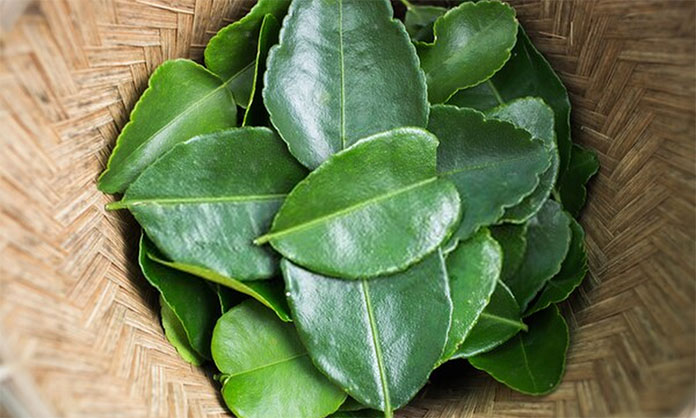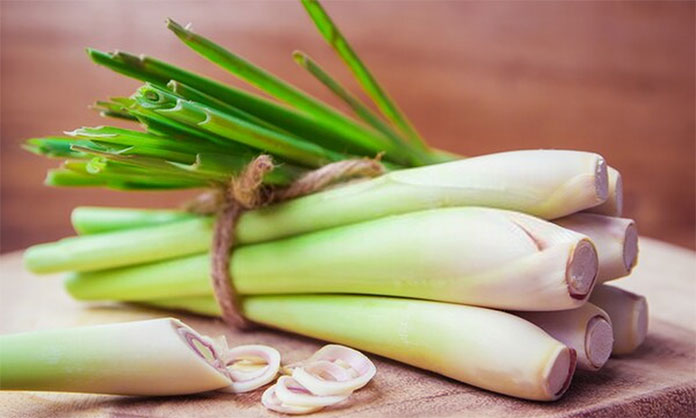Best Gruyere Cheese Substitute: Our Top 5 Recommendations
Gruyere cheese is one of the more popular varieties of cheese in the world. It’s a great creamy and rich cheese. It is a favorite of many home cooks and chefs when cooking different recipes.
More...
But what happens when you run out of gruyere at the last minute and the stove is already cooking the half-finished dish? Keep reading to find out the best gruyere cheese substitutes you can use.
Contents
What is Gruyere Cheese?
Gruyere came from the Swiss town of Gruyères. It is a pale yellow firm cheese that has a creamy and rich flavor, with slight nutty tones. You will see holes (referred to as “eyes”) on it, just like Swiss cheese. These eyes are formed when the bacteria used to make the cheese form gas bubbles. Compared to other kinds of Swiss cheese, gruyere has fewer and smaller eyes.
Gruyere is often used for Italian and French dishes, such as pasta, pizza, sandwiches, and even souffles. You can find gruyere in stores and markets, but it is quite expensive. On average, it can cost somewhere between $14-18 per pound. This might be another reason why you’d like a substitute cheese, to save a bit on your grocery shopping costs.
What Makes a Cheese Creamy?
There are so many kinds of cheeses from all over the world. Gruyere cheese is a good choice if your aim is to create a rich and creamy dish. This is because that’s how it is made in the first place. Cheese comes from milk, and is curdled, where the curds are squeezed out and separated to remove excess liquids.
There are cheeses that are curdled with rennet (a mix of enzymes), and melt after curdling. There are also cheeses that are curdled using acid, and these varieties do not melt at all, such as queso fresco and ricotta.
The level by which a cheese melts is determined by its water-to-fat ratio. The idea is that having more water will create a better melt, while dryer cheeses will melt less and poorly (or simply curdle into pools of fat).
Cheese dry more if they are aged longer. This means that younger and fresher cheeses will melt better compared to aged cheese.
The 5 Best Gruyere Cheese Substitutes
1. Beaufort Cheese

Beaufort cheese comes from France. This semi-hard cheese is made using unpasteurized cow’s milk. It’s categorized as a mountain cheese, and is believed to be one of the best alternatives to gruyere because of its ability to melt really well. With that said, it can be used in making sandwiches, pizza, pasta, fondues, bruschetta, tarts, and carpaccios.
Beaufort cheese is brine-washed, a process that enhances its natural flavor. The milk used to make this cheese comes from cattle of the Tarine breed. To make 100 pounds of Beaufort cheese, you’ll need 500 liters of milk. The result is a pale yellow interior, much like comté.
It is best paired with salmon and other fish-centric recipes. It goes well with burgundy white wine, which complements the buttery and firm characteristics of the cheese.
2. Jarlsberg Cheese

Jarlsberg cheese comes Jarlsberg, Norway and was first created by a local agriculturist, Anders Larsen Bakke. He produced a semi-soft cheese that is great for sandwiches and snacks, or eaten by itself.
Similar to Emmentaler cheese, it has large holes in its body. Its flavor is a blend of nuttiness and sweetness that isn’t too strong. It’s used for baking and cooking mostly, but many people partner it with beer and white wines.
It is a good gruyere substitute because it costs relatively less, at $12-14 per pound. It can easily be mistaken for Swiss cheese because it appears the same. However, you can tell it apart because of its stronger, sweeter taste compared to Emmentaler cheese. Inside the Jarlsberg cheese’s body, you will see a buttery and rich yellow flesh with a yellow-wax rind.
Aside from using it as a gruyere alternative, people prefer Jarlsberg because it is quite a versatile cheese. Some would even go as far as calling it an all-purpose kind of cheese. It melts really well, making it ideal for quiches, fondues, and other hot dishes.
You can buy Jarlsberg in wheels, wedges, minis, and even personalized weights. You can also indicate whether or not you want it with rind.
Aside from being an all-purpose cheese, people go for Jarlsberg because of its potential health benefits. For instance, 1 ounce of this cheese will give you a whopping 12% of your total calorie needs for the day. It is also rich in calcium, providing 20% of your daily calcium needs (1 ounce serving). As we all know, calcium is an important mineral that maintains and repairs bones and teeth.
It’s also a rich source of protein, giving 13% of your daily recommended protein intake (for men) per 1 ounce serving, and 15% for women. Protein makes sure your body is capable of repairing damaged tissues and muscles, as well as building new cartilage and bones.
3. Raclette Cheese

Raclette cheese is also known for creating a superb melt. It was first discovered in the region of Valais in Switzerland. It is a semi-hard cheese that takes its name from a traditional Swiss recipe of the same name. The name takes origin from the French word Racler literally means “to scrape”.
This cheese ages well for 3 to 6 months. 80% of all Raclette cheeses come from Switzerland, but there is also a significant production of this cheese in France. The French version is much creamier, smoother, and softer in texture.
This cheese goes well when paired with hot or warm drinks. This isn’t just a personal preference, but rather a health tip. Eating Raclette cheese while drinking cold beverages - even just water - can result to the cheese hardening inside your gut, causing indigestion.
In the past, the cheese was cooked using open fire. But today, the most used technique is to melt it on a non-stick electric grill. It keeps getting more popular globally. It first became famous in Germany, France, and Switzerland. Today, it is a favorite in Aussie restaurants and in the streets of New York.
We recommend using this in place of Gruyere because it melts amazingly. You can use it for pizza, pasta, sandwiches, fondue, lasagna, and other dishes that require creamy cheese. Serve it alongside gherkins, small potatoes, air-dried meat, and pickled onions.
Because of its sweet and nutty flavor, soft and chewy crust, and firm texture, this cheese has become increasingly appealing to cheese lovers. You can buy it for $18-20 per pound, which is more than gruyere costs. If budget concerns are your main motivation, then you might not want to go with Raclette cheese.
4. Emmental Cheese

Emmental cheese also gets its name from where it came from. It was first made in Emmental Valley, located in the canton of Bern, in West-Central Switzerland. You can spell it in several other ways: Emmenthaler, Emmenthal, or Emmental. It technically originates from the Swiss, but today, it is quite popular in Germany and France as well.
It is another semi-hard cheese that uses cow’s milk. It melts great and has large holes in its body, similar to other Swiss cheeses. Because of its melting properties, it is ideal for fondues, ravioli, tarts, pastries, bruschetta, sandwiches, and more creamy dishes.
If you are from the US, you might be unfamiliar with the term “Emmental” cheese. Americans are used to call it “Swiss cheese” - yep, that’s right. That’s the one.
This cheese can be aged between 2 to 18 months. You can use this in place of gruyere, because of its creaminess and great melting capacity. Also, it costs around the same: at $14-18 per pound. You can store it for up to 6 days. To keep it longer, place parchment paper between slices, then wrap it again with a plastic wrap.
It is a firm cheese with a buttery taste, but you get mild sharpness and nuttiness along the way. It has a pale yellow color as well, and has a natural rind. It makes great cheese-based sauces. Try using it for grilled sandwiches -- you’ll be pleasantly amazed.
Emmental and gruyere are the only main cheeses that are used for making the traditional and original recipe for fondue. It’s also perfect for mac and cheese recipes. Pair it up with champagne, Riesling, Merlot, or Beaujolais wines.
If you aren’t a wine fan, but more of a beer connoisseur, then you’ll be pleased that Emmental cheese goes greatly with stout, light lager, or Belgian beer because of its natural fruitiness. On that note, you’ll want to partner it with grapes, peaches, apples, and pears for a nice cheese platter.
5. Appenzeller Cheese

Appenzeller cheese is from (yes, of course) Appenzell, Switzerland. If it is starting to feel like this country is the only source of great cheeses, well, maybe that’s alright. They’re really good at it. This one’s a hard cheese coated with brine. It may contain wine or cider, and its flavor relies on the length of its aging process.
There are three kinds of Appenzeller cheese:
Another variety of the cheese has recently became available. It is called Appenzeller Bio. It is basically the same, with the exception that it is made only from organic milk.
Appenzeller cheese is considered one of the - if not the absolute - spiciest cheeses in Switzerland. It used to be made in its place of origin, but now it is mostly produced in St. Gallen.
You can use it in place of gruyere as a delicious and unique substitute. However, it is much more expensive, especially if the variety you are looking for is aged for a longer time. It can cost between $24-32 per pound in most stores.
Appenzeller is rubbed with an herbal brine before aging. This sets it apart from most other cheeses. Aside from this, it also possesses a unique appearance: straw-colored, firm, open, and smooth. Its flavor creates a mix of fruity, tangy, and spicy tastes on your tongue, together with a mild aroma.
It is classified as an artisan cheese. It is smear-ripened, too. Appenzeller cheese is made using the world-renowned Brown Switzerland cows’ milk. These cows only eat fresh grass, flowers, and herbs from the Alpine region of the country, thereby producing premium quality milk.
A Final Word
When substituting gruyere with another cheese, take into consideration the unique flavor of each option. Think about the dish you’ll be using the cheese for before making a decision, as using a cheese that’s too creamy, not creamy enough, or too strong in flavor, can mess up your recipe.
If you aren’t used to making substitutions before, start small and keep practicing until you perfect the process. Don’t buy a lot at once, use the smallest amount possible and adjust along the way. Eventually you’ll get the groove of things and you will perfect it.
I hope this article was a helpful read for you. I sure had fun making it, and I learned a lot as well. Doesn’t it make you want to visit Switzerland to see how all of their high-quality cheeses are made? It makes me crave for a nice cheese-and-wine platter as well!
Don’t forget to leave your thoughts below! What’s your preferred gruyere cheese alternative?







